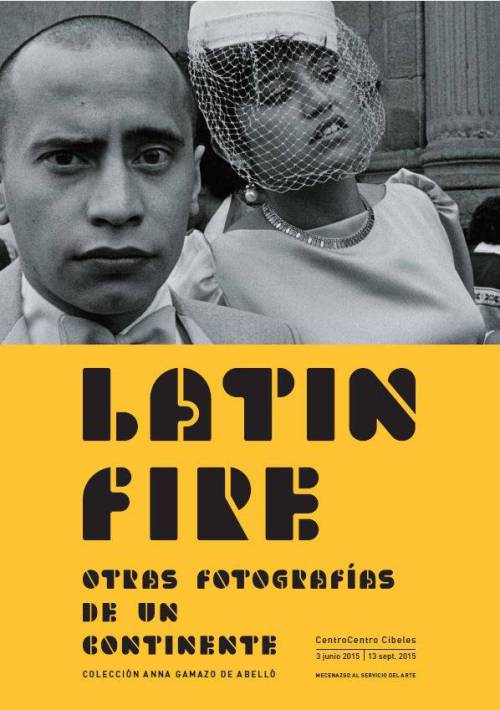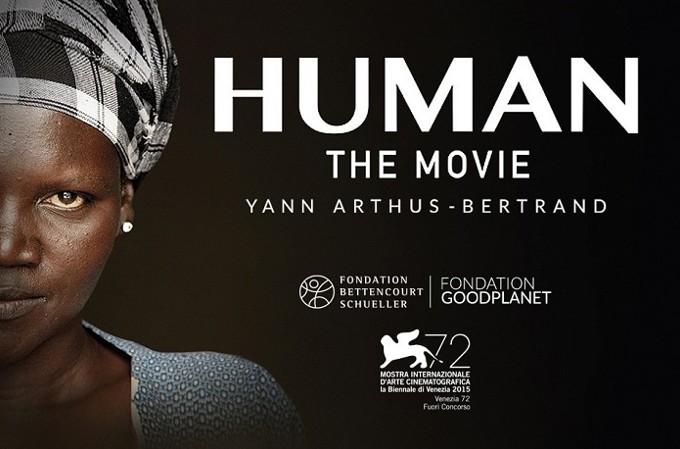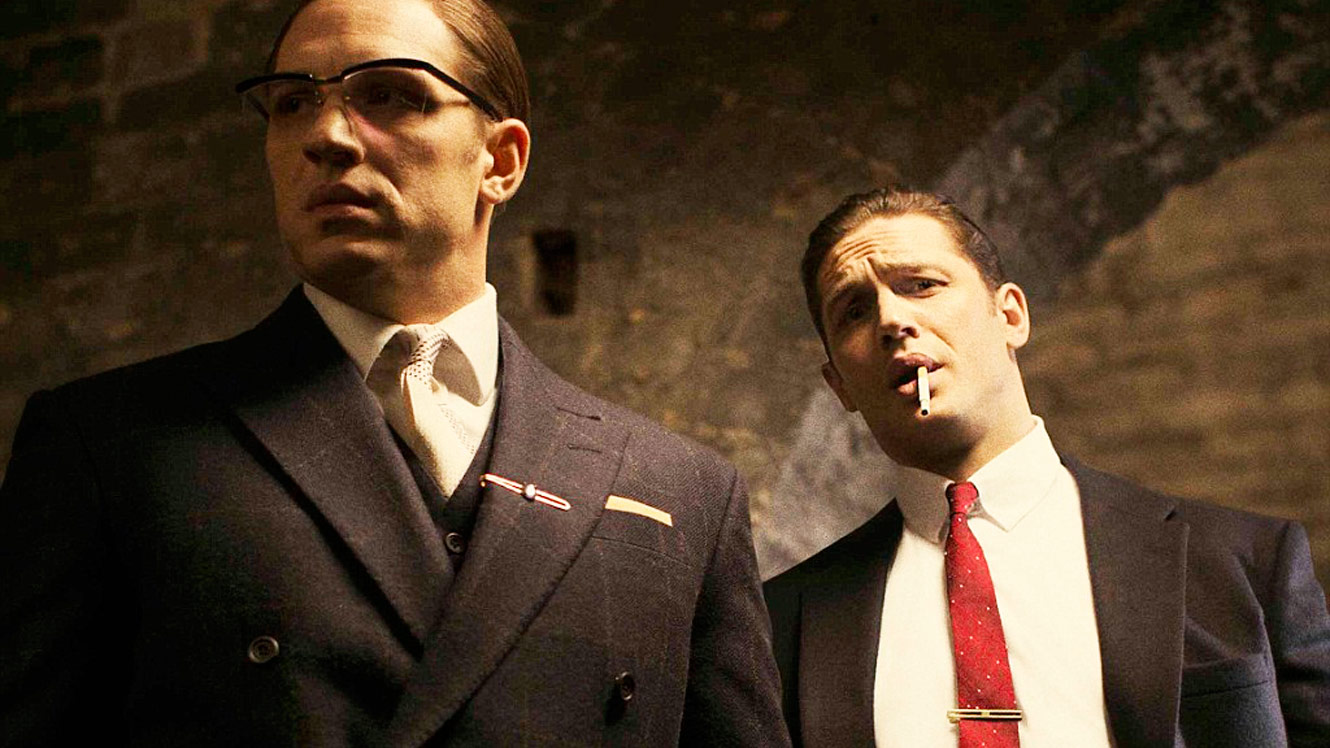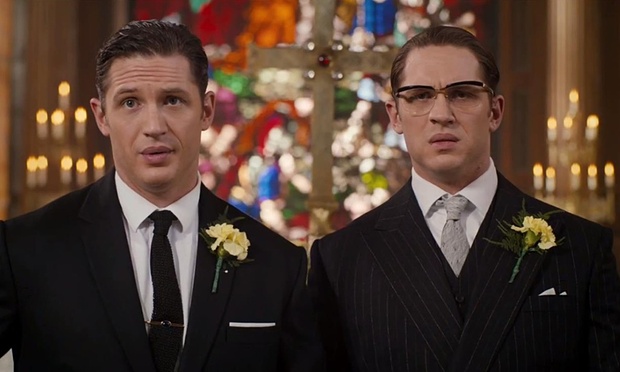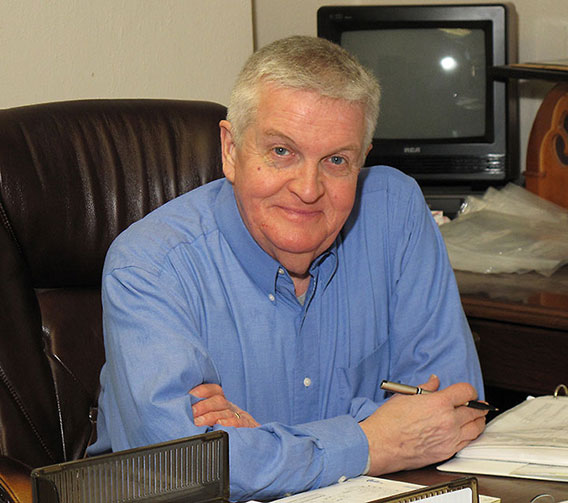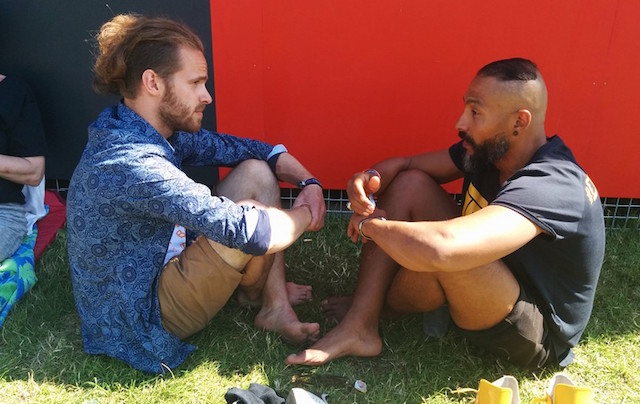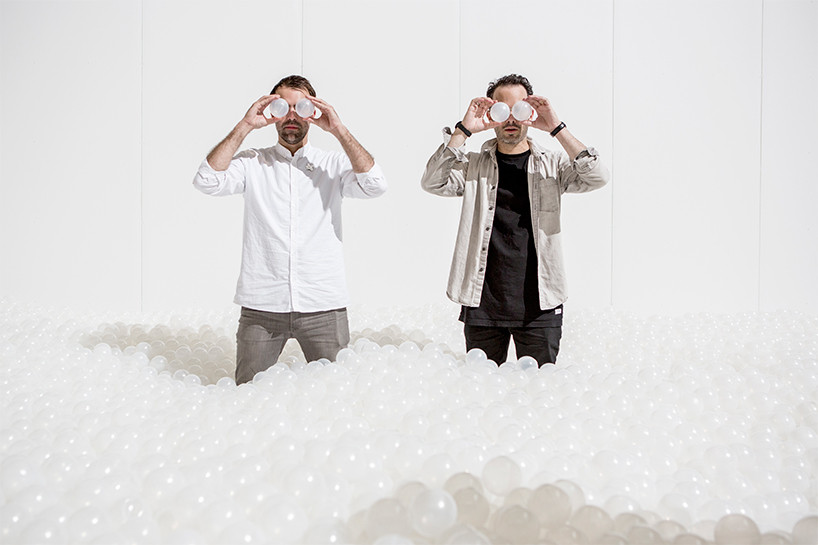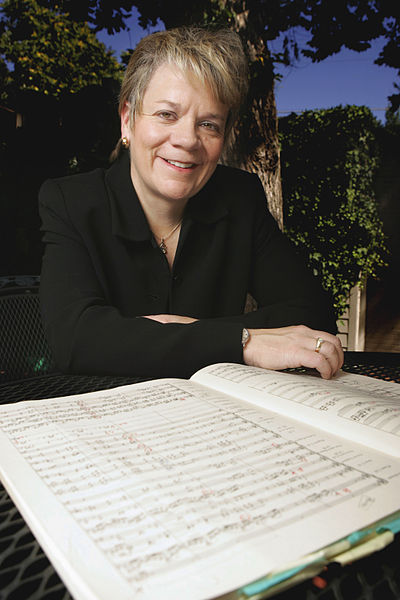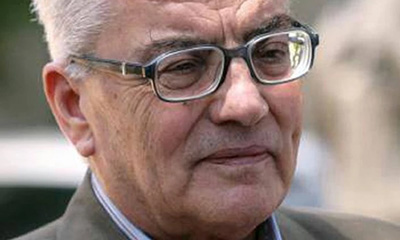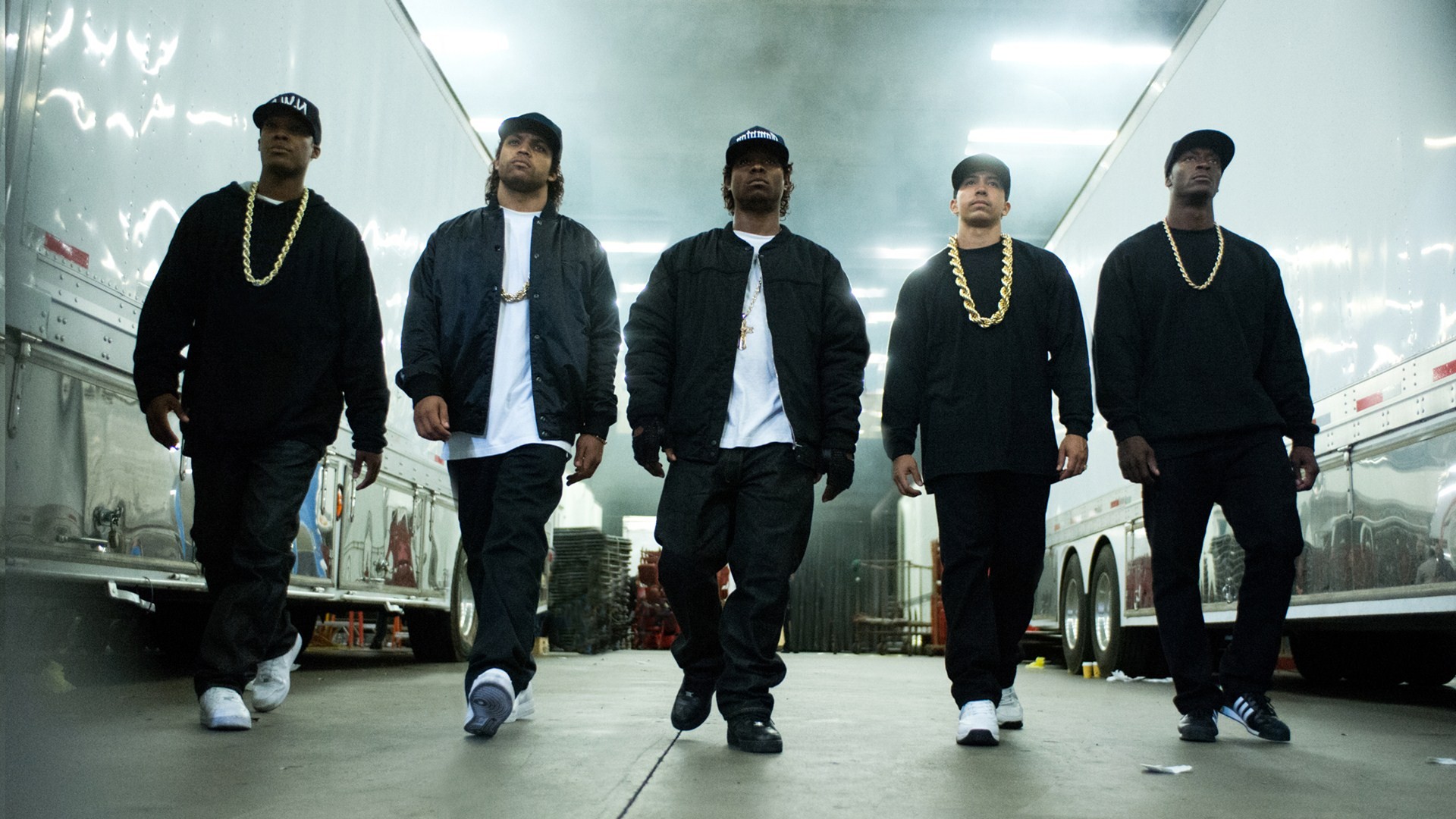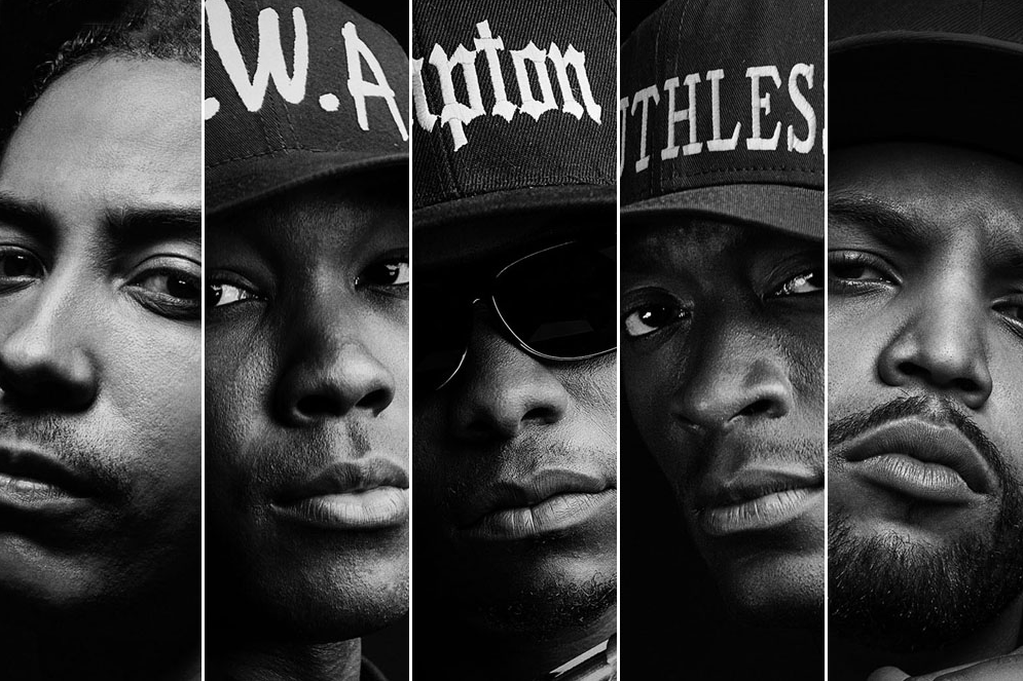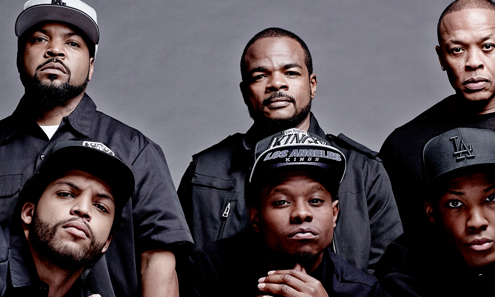A mixed bag of images fails to hold your attention
“Human” — What Does It Mean?
The human experience on Earth. This is what French photographer and director Yann Arthus-Bertrand tried to capture in his last movie ‘Human,’ which premiered Saturday simultaneously at both the 72nd Venice Film Festival and the United Nations in New York City.
While some qualified ‘Human’ as the Godfrey Reggio’s ‘Koyaanisqatsi’ of our generation, Yann Arthus-Bertrand reportedly got inspiration from Terrence Malick’s ‘Tree of Life’ (Palme d’or at the Cannes Film Festival).
After his 1999 worldwide-acclaimed best seller photo-essay ‘Earth From Above,’ filled with stunning aerial photography of Earth, and his 2009 praised documentary ‘Home,’ which has been broadcast in 14 languages, Yann Arthus-Bertrand, a stalwart defender of the planet, presents his latest highly anticipated and ambitious work ‘Human.’
‘Breath-taking,’ ‘powerful,’ ‘authentic,’ those were some of the words whispered by the first members of the audience to step out of the cinema after the projection. This intense and compelling three-hour documentary presenting the extraordinary stories of ordinary people from around the world clearly did not leave the public indifferent. ‘Human’ received a standing ovation after its premiere at the Venice Film Festival in presence of the entire film crew, themselves in tears and very moved by the reaction of a stirred public.
“I think the only way to make people think is through emotions. Not through the brain — through the heart,” the director said during an interview at the Venice Film Festival.
Close up faces genuinely staring at the audience with a simple dark grey background, no context nor name, age, nationalities or explanations but only eyes, mouths, tears and voices telling about their stories, memories and thoughts. This is ‘Human’. Mothers, fathers, fighters, victims, children, murderers who were all asked to answer the same questions involving the meaning of life, love, happiness and war among other essential topics. The interviews were selected among more than 2,000 involving people in 60 countries for a period of three years. We do not have to know who those people are but just listen to their words and what they have to tell us about the privilege of being alive.
The compiled interviews are subtly mingled with lyrical aerial nature shots, ranging from enraged waves crushing on rocks and lighthouses, or slow motion close-ups of children riding horses in a green field to the busy enlightened streets and skyscrapers of New York. Sublimated by a grandiose orchestral soundtrack by Armand Amar, cities, oceans, crowds, deserts and forests form the pattern of human experience as the sound of men and women voices mingle with that of the wind and the sea. Through an alternation of powerful images, words and sensations with the help of a dedicate team, Yann Arthus-Bertrand hoped to restore — or awaken — human compassion.
The concluding seconds of the film focus on a visibly touched interviewee in her late fifties addressing directly the film crew. What should have been simple greeting words to the few people present on that day of filming became a message to everyone:
“You’ve brought up a lot of things for me today. You’ve made me feel important. You’ve made me feel that I had something to offer. You’ve made me feel that I had a place to go. You’ve made me feel like my stories were welcome. And you made me feel happy.”
“I think people need to feel that they’ve done something while they’ve lived. They need to feel that they’ve contributed.”
“Today you made me feel that I have contributed, and I am very grateful to that. Thank You.”
‘Home’ and ‘Human’ are both available on YouTube
By Pauline Schnoebelen
Legend Movie Review: Two Tom Hardys, Twice The Mayhem
Brace yourselves, the biopics are coming in full force
The Oscar bait films are in bound, and to lead the pack is “Legend.” Hot off the heels of “Straight Outta Compton,” “Legend” follows the tale of Reggie Kray (Tom Hardy) and Ronnie Kray (Tom Hardy) as they take over the entirety of the 60’s London underworld. That’s right. For those who know nothing of the film, The Kray twins are both played by the ever-talented Tom Hardy. An interesting gimmick, but how does it work in practice?
Remarkably. Truly remarkable. At first it’s undeniable to see just Tom Hardy, but as the film goes on the two twins really become their own characters. Small nuances differentiate them, posture, facial expression, movement, each tuned to the individual aspects of the specific character. The goal of any actor is to fool the audience into not seeing the actor but the character they portray, a feat Tom Hardy pulls off with ease.
“Legend,” perhaps reflecting the central characters too much, is ultimately a very schizophrenic and split experience in most of it’s presentation. It works in some aspects buy in others it really is a head scratcher. The highlight of the show for many audience members will certainly be Ronnie Kray, the unhinged psychopath of the two. For a film focused on underworld violence, Ronnie proves to be the foil to the typical genre conventions with genuinely laugh out loud dialogue and actions that provide frequent and copious levity. Ronnie’s scenes are the stand outs from the film providing some truly memorable moments. He’s likeable despite his obvious and apparent flaws. This is both one of the film’s greatest strengths and weaknesses.
“Legend” feels confused and erratic. It jumps from moments of complete levity to those of dire consequences. It constantly pokes fun at the stigma of homosexuality light heartedly, then alternates to the psychological deterioration of another character. It’s jarring to say the least and because of the evident lack of tact the tonal changes take, the main emotional beats of the film don’t really hit home. Or anywhere close to home for that matter.
The script very clearly favours Ronnie too, with the more level headed Reggie’s character being rejected to development via a simple romance sub-plot that weighs the core themes of the film far further than they should have ever reached. These conversations that Reggie Kray and his romantic interest Frances (Emily Browning) have also have a strange sense of revision, as if one script was edited heavily to include weighty one liners meant to inject some sort of ideological drama into the film where it seems it has no right to be. Pseudo, “deep” lines are placed oddly at the end of conversations for what I can only imagine was to leave a poignant sense in the audience. Not so.
“Legend” suffers from what can only be described as a confused tone which leads to an incredibly distracting dissonance between what we’re seeing on screen and what the tone suggests. Perhaps this is what, “Legend” was aiming for, a sense of utter surrealism in the face of preposterous situations yet the totally bizarre scenes are stuck beside supposedly emotionally heavy scenes resulting in a messy, confused and ultimately disappointing final film.
6/10
Review by Alex Reid
On How North Korean Defectors Resettle In South Korea
Following the lead of Germany, more and more European countries are accepting asylum seekers who are mostly from war-torn Syria. The countries, including the United Kingdom and France, are to set out plans to resettle refugees.
In 1990s, South Korea faced similar issues regarding refugees, as the number of North Korean residents who defected to the South drastically increased due to famine and the economic crisis in the North.
Currently, there are about 280,133 North Korean defectors living in the South, according to the statistics of the Ministry of Unification, issued in June 2015.
When North Korean residents arrive in South Korea, first they have to go through investigations and interviews, conducted by the South Korean Intelligence Service, in order to clarify their identity. They stay at the Defector Protection Centre during that period. It usually takes a minimum of four weeks, but it can be extended if a defector confesses false truths. After the investigation processes are completed, they are finally able to reside in the South.
The South Korean government has been helping North Korean defectors to settle in the South under the “Protection and Resettlement Aid Act for Defecting North Korean Residents,” introduced in 1997.
Resettlement Funds
The government arranges a rental apartment for every North Korean defector. The rental deposit fee of an apartment is up to 13 million Won (US$11,000). Although the government pays a significant amount of the fee for them, they need to bear their monthly rental fees and utility bills.
They also receive 7 million Won (about US$5,900) as the initial resettlement fund, apart from housing expenses. However, defectors do not receive this fund at once, just in case that they lose it in a short time before settling down. Therefore, firstly 4 million Won is provided to those who finish the 12-week education program at Hanawon and then they later receive the remaining 3 million Won, at a rate of 1 million Won every three months.
However, the 7 million resettlement fund is only offered to defectors who come to South Korea without any family members. If he or she brings a family member to the South, less than 7 million Won is paid to each person. Also, a bigger apartment is prepared for them.
Moreover, they can obtain up to 25.1 million Won (about US$ 21,100) from the encouragement fund. In the past, it was also included in the resettlement fund, but from 2005 defectors who are looking for a full-time job through a professional job training school have also been eligible. People over sixty and with impairments are also able to get extra fund to the tune of a maximum 15.4 million Won (US$13,000) for treatment.
Education
Hanawon (the Settlement Support Center for North Korean refugees) is a facility where defectors are educated about life in the South. It was established in 1997, and has a 392-hour course that spans 12 weeks.
“Hanawon is the first place where North Korean defectors start their life in South Korea. Through education, we help them to be part of South Korean society not only physically, but also mentally,” Kim Joong-Tae, former head of Hanawon, told Daily NK.
In general, the course consists of social adjustment and occupational education, but it is customized by each age group. For example, teenage defectors focus on a local school curriculum, as they will be sent to a South Korean school three months later, while adults spend more time on studying an employment system. Also, there are programs and counselors to take care of the newcomers physical and mental health.
Despite Hanawon’s education offerings, many young North Korean defectors still have difficulties in adjusting to a competitive local South Korean school system. Therefore Hankyoreh High School, a specialised school for teenage defectors, was founded in 2006. It assists young defectors to catch up on the regular school curriculum and to understand democratic society, South Korean culture, and the local language which includes many English words, compared to the Korean used in the North. If they want, they can transfer to a regular high school later on.
In 2008, the Ministry of Education organized an academic deliberation committee for North Korean defectors who finished their high school in the North, in order to evaluate their secondary academic ability. If they pass the examination, they are able to enter a South Korean university. National and public universities offer free tuition to defectors under age 35 if they enroll in a university within five years after their high school diploma is recognized. There is no age limit to study at colleges and online universities without fees.
Employment
Most North Korean defectors say that the biggest challenge after they arrive is to find a job in South Korea, as they have a lack of occupational skills and understanding of capitalism. To resolve these problems, the Ministry of Unification and the Ministry of Employment and Labor introduced a basic job adaptation training program at Hanawon in 2006. Defectors are able to have practical training as well as field experience at a company through the program. Furthermore, the South Korean government pays half of the wages that each North Korea defector worker receive.
Although the South Korean government continues to improve policies and laws to improve the lives of North Korean defectors, many are still left wandering.
North Korean prison escapee Dong-Hyuk Shin said that it is very difficult for North Korean defectors to fully adjust to the capitalist system.
Read more: North Korean camp survivor Dong-Hyuk Shin tells true feelings about his book and campaign
“In the North, we are just happy if we don’t starve. However, here we should compete consistently to achieve what we need and want. It is a totally different lifestyle between the two Koreas, so it is kind of understandable that some of North Korean defectors came back to the North again,” Shin said.
Moreover, discrimination against defectors is rampant, particularly in the workplace. According to research data from the Ministry of Unification and the Korea Hana Foundation, defectors’ average wage per week is 760,000 Won (US$638) lower than that of South Korean citizens, even though they work more hours. Also, their unemployment rate is four times higher.
For improvement of defectors’ human rights in the South, most of all it is important that South Korean citizens should accept them as members of their society, in order to prepare for the two Koreas’ unification. Also, North Korean defectors should acknowledge the different social systems of the two countries, and put more effort into following a new lifestyle.
Analysis by EJ Monica Kim
Business Better Than Ever At The Last Cassette Factory
Springfield, Missouri is home to the National Audio Company — or as it is colloquially known, the Last Cassette Factory. It’s a fairly self-explanatory name. NAC is indeed the last major producer of audio cassette tapes still in business in the United States — a business that’s better than ever thanks to the retro movement encouraging a growing number of bands and audio producers, young and old, to return to the music-sharing media of decades past.
President of the NAC Steve Stepp has said in numerous interviews that his company was surprisingly unhurt by the large scale move from cassettes to CDs, and from CDs to MP3s. According to production manager Susie Brown, bands today are increasingly driven back toward the “warm analogue sound” of cassettes and records.
Perhaps part of the reason for the NAC’s persistence is that during the heyday of cassettes, the company mainly produced tapes for spoken word performers and blanks for private use. This meant that when the CD wave hit, the company was largely untouched. Fast-forward to 2014 which saw company producing over 10 million tapes – and sales are up another 20 percent this year. Albums being printed on NAC tapes include a Metallica album and a special release of the theatrical soundtrack for Marvel’s Guardians of the Galaxy.
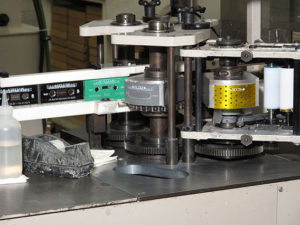
Cassettes may be a more tangible and personal way of sharing music — if you ask some people, like music critic Rob Sheffield, cassettes are far more romantic than MP3’s. There’s certainly something to be said for being able to give a friend a painstakingly recorded mix tape in the form of an actual tape, rather than just uploading it to their iPod or posting it online. Cassettes are also more portable than fragile, easily scratched CDs – it’s easy to throw one in your backpack or on the seat of your car, and expensive carrying cases are rarely required.
Undoubtedly the resurgence of tapes relies at least in part on the nostalgia of an older generation who grew up with the tapes and now has the money and influence to start bringing them back to the mainstream, as well as hipsters picking up on the fad of retro music mediums like vinyl. At any rate, especially with new “cassette-only” labels now popping up, it might be time to head down to the thrift store to pick up a cassette player of your own.
By Dallas Jeffs
Plant-Based Diet For First Time Ever Recommended In US Federal Guidelines
Nutritional experts of the 2015 Dietary Guidelines Advisory Committee recommend a predominantly plant-based diet for health and environmental reasons.
As was recently shared in the article, “8 Nations Going Vegetarian, Proving To The World Less Is More,” a massive shift in health mentality is inspiring people everywhere to invest in their health. In 2010, the UN released a report urging citizens to adopt a plant-based diet for health and environmental reasons. Who knew that earlier this year, the 2015 Dietary Guidelines Advisory Committee would outline similar recommendations for American citizens?
The report, released earlier this year, includes recommendations by the 2015 Dietary Guidelines Advisory Committee on what Americans should be eating. This is the first time the committee has concluded a diet higher in plant-based foods and low in animal-based foods to not only be both healthier for the body, but better for the environment.
The report details their official recommendations for a “healthy dietary pattern,” which has vegetables, fruits, and whole grains at the very top of the list and red meat and processed meats at the very bottom.
“The overall body of evidence examined by the 2015 DGAC identifies that a healthy dietary pattern is higher in vegetables, fruits, whole grains, low- or non-fat dairy, seafood, legumes, and nuts; moderate in alcohol (among adults); lower in red and processed meats; and low in sugar-sweetened foods and drinks and refined grains.”
The 571-page report gives an in-depth look at what Americans are presently eating. “The quality of the diets currently consumed by the U.S. population is suboptimal overall and has major adverse health consequences,” it states.
Most notable is the large gap between a healthy diet and the standard American diet: “On average, the U.S. diet is low in vegetables, fruit, and whole grains, and high in sodium, calories, saturated fat, refined grains, and added sugars.”
Earlier this year it was reported that only 9% of American adults manage to consume the recommended amount of daily fruits and vegetables. Despite the bounty of healthy living resources and information available, America’s greatest challenge may be overcoming the idea of ‘quick fixes’ and short-term solutions.
The committee’s findings on the Standard American Diet include:
- Roughly half of American adults have one or more chronic diseases related to poor diet and inactivity
- Preventable diseases include cardiovascular disease, hypertension, type 2 diabetes, and some cancers
- More than two-thirds of American adults are overweight or obese
- Nearly one-third of children are overweight or obese
- Chronic diseases disproportionately affect low-income communities
- Focus on disease treatment rather than prevention increases and strains health care costs and reduces overall health
Amazingly, this is also the first time the committee has included environmental sustainability in its recommendations. It is mentioned that a diet lower in animal foods is not only healthier for the body, it’s better for the environment:
“Quantitative modeling research showed how healthy dietary patterns relate to positive environmental outcomes that improve population food security. Moderate to strong evidence demonstrates that healthy dietary patterns that are higher in plant-based foods, such as vegetables, fruits, whole grains, legumes, nuts, and seeds, and lower in calories and animal-based foods are associated with more favorable environmental outcomes (lower greenhouse gas emissions and more favorable land, water, and energy use) than are current U.S. dietary patterns.”
The federally appointed panel is comprised of nutritional experts, and their recommendations help to put policies in place to ensure American eat healthier. Their task is to help set standards for school lunches, food stamp programs, and other programs for children and pregnant women.
By at Amanda Froelich at True Activist
Human Library Lets You “Check Out” People In Attempt To Foster Diversity
To foster diversity and inspire acceptance of all, an incredible ‘Human Library’ in Denmark is allowing people to check out “interactive books” for half an hour. Its main difference from a ‘traditional’ library, however, is that the words are coming from humans volunteering to tell their tales.
Readers who venture to ‘The Human Library’ can peruse the library catalog and select an experience to hear about – Child Of The Holocaust Survivors, The Gypsy Tale, Iraq War Veteran, and Orphanage Boy, are examples of story titles offered.
Once a reader makes his or her choice, they are led to a discussion area to meet their book and hear the tale, cover to cover.
The inspiring initiative was started in 2000 by a Danish youth-based nonprofit, “Stop The Violence.” The organization’s intention was to inspire conversation and foster understanding between different types of people that would normally not interact with each other.
As the Human Library Facebook Page shares, “The purpose is to challenge what we think we know about other members of our community. To challenge our stereotypes and prejudices in a positive framework, where difficult questions are accepted, expected and appreciated.”
As GoodNewsNetwork shares, the first Human Library event was hosted at the Roskilde Festival in Copenhagen, one of the largest summer festivals in Northern Europe. The theme focused on community activities to help stop growing levels of violence and bias in the area. Now, the project has spread to over 50 countries across the world.
By Amanda Froelich at TrueActivist.com
Snarkitechture’s THE BEACH Transforms Museum Landscape
The National Building Museum in Washington, DC, has become host to THE BEACH, an installation that emulates a natural landscape while flying in the face of museum tradition. The oddly commercialized, sleek shoreline is a vaguely humorous, somewhat subversive take on multiple modes of summer leisure.
The show, running until September 7th, 2015, is getting most of its press for the inclusion of a 10,000 square-foot ball pit, composed of almost one million recyclable plastic balls in a uniform translucent white. At the end of this ball pit “ocean” is a wall of mirrors that play the role of a distant horizon, providing the illusion that the ocean goes on forever.
Creators Daniel Ashram and Alex Mustonen are the duo behind the Brooklyn-based design collective Snarkitechture. THE BEACH seems perfectly in keeping with the firm’s usual style. Frequently ustilizing stark white objects and often addressing themes of consumerist and design-oriented society, the team specializes in large installations, innovative interior designs, and art projects with a slightly subversive, humorous edge.
THE BEACH is an interesting addition to any museum space, encouraging guests to sit in chairs and idle on its shores, eat organic, fair-trade snacks from the included Union Kitchen snack bar, and to “swim” in the ball pit. All these activities seem to exist in a place of passive opposition to the traditions of a museum, where food is forbidden, guests glance at paintings and sculptures for a few seconds before moving on, and where touching any artwork is strictly forbidden.
It might not be a germ-a-phobe’s paradise, though the museum assures visitors that all of the balls in the pit are molded with anti-microbial agents, as well as being sprayed with anti-microbials and cleaned nightly. The average person should leave the BEACH with their health, but good luck if your phone happens to fall out of your pocket while you swim toward the mirrored horizon.
What is clear is that while the exhibition has been on, the National Building Museum has reported a threefold increase in the number of visitors it’s welcomed during its summer season. Is this sort of interactivity the answer to revitalizing the museum experience? We’ll have to wait and see as more and more artists begin to experiment with the medium.
By Dallas Jeffs
Prom 62 Review: OAE Plays Brahms Under Alsop
Both Alsop and the orchestra know what they’re doing, but the results aren’t quite magical ★★★★☆
As we move towards the 25th anniversary of Bernstein’s death, his one-time protégée Marin Alsop is moving from strength to strength. Music Director at the Baltimore and São Paulo State Symphony Orchestras, Alsop made history in 2013 by becoming the first woman to conduct the Last Night of the BBC Proms. She returns to the prestigious post again this year: but first she has taken the helm of the Orchestra of the Age of Enlightenment (OAE) in an all-Brahms programme.
A period instrument ensemble, the OAE and associated Choir of the Enlightenment (CE) generally focus on Baroque and classical repertoire. But perhaps this is no bad thing, since Brahms was firmly rooted in the old masters – not least Handel, whose influence can be heard clear as day in the Triumphlied (see below). Alsop, meanwhile, has a special relationship with Brahms, having been profoundly moved by his music in her youth.
The Academic Festival Overture, Op. 80, was a gift to the University of Breslau after it awarded Brahms an honorary doctorate. He bases it, fittingly, on student drinking songs, and it seems to communicate a sense of camaraderie. The OAE were rhythmic and driven throughout. At one point the brass seemed a little loose, and at another I think I heard an oboe flail around, as if the orchestra were still warming up. It was a professional performance but it didn’t thrill me.
The Rhapsody for Alto, Male Chorus and Orchestra, Op. 53 – usually known simply as the Alto Rhapsody – came next. Jamie Barton was the soloist, and her magnificently resonant voice easily coped with Brahms’ theatrical writing. The orchestra showed great control, never dominating the texture. At the entry of the chorus the piece began to resemble a requiem, and no less so at the finish, when the C major resolution suggested a kind of Lux Aeterna-type sentiment. All parties showed outstanding dynamic sensitivity. For me, this was the highlight of the evening.
The little known Triumphlied, Op. 55, was composed to celebrate a war victory. In the first movement, the chorus was very clipped, the scales in the strings clean, the dense counterpoint handled very well. But my attention wavered after that. The solo baritone, Benjamin Appl, had a nasal, strained voice, as if he were about to sneeze at any moment. Still, momentum was maintained, and as the sopranos drove upwards towards the end I got back into it.
After the interval came the centrepiece, Brahms’ First Symphony (Op. 68). The orchestra made sweeping statements in the first movement, the strings sometimes lurching in and out of the sound to give added drama. The double basses were suitably ominous, but the strings’ pizzicato dab at the finish came out messy. In the next movement, despite excellent playing, I was never really moved; at the quiet, freeze-frame conclusion, some of the violins were whiney, which rather ruined the moment.
Things picked up in the trio section of the third movement, the rhythmic motifs here eliciting comparison to Beethoven. At the beginning of the fourth the playing was very emotional, and the next section was brilliantly animated. But after that, for me, came twenty minutes of boredom. Only at certain moments – when the brass took the lead, for example, or when Alsop brought out heavy sforzandi – was I brought back into the music. Naturally the final cadences were big and bold, but the performance won’t stick in my memory. As with the rest of the programme, the ability was there, but there was no X Factor.
By Robbie Carney
Islamists Kill 2,297, Injure 2,246 This Month In 240 Attacks Globally
Islamists killed 2,297 people and injured 2,246 in 240 separate attacks in 22 countries around the world in August, according to terrorist watch group The Religion of Peace, which has kept regular statistics on Muslim religiously motivated violence since September 2001.
The attacks took place in Afghanistan, Algeria, Bahrain, Cameroon, Chad, the Democratic Republic of Congo, Egypt, India, Iran, Iraq, Kenya, Lebanon, Libya, Mali, Niger, Nigeria, Pakistan, Palestine, Philippines, Saudi Arabia, Somalia, Syria, Thailand, Turkey, USA and Yemen,according to TROP editor Glen Roberts.
The attacks included 36 suicide attacks.
Worldwide, Muslims have commit an average of five separate acts of religiously motivated violence per day since TROP began its work. Roberts suspects terrorism has increased since the attacks on the World Trade Center in 2001 when he began.
“Terrorism before 9/11 was bad in Algeria and Kashmir,” Roberts told us. “I think the numbers have been worse since, just in other places — Iraq, Afghanistan, Pakistan, Somalia and Syria.”
Straight Outta Compton Movie Review: Express Yourself
The biopic is a classic genre in film that usually leads to award season opportunities as well as audience and critical acclaim, but where most biopics focus on those historical characters that are largely considered to be “good” people, “Straight Outta Compton” focuses on the endlessly controversial world of gangsta rap, specifically the pioneering group of the sub-genre, N.W.A.
“Straight Outta Compton” follows rappers Eazy-E, Dr. Dre, Ice Cube, DJ Yella and MC Ren as they form one of the most prolific hip hop groups of all time, and the effect it has on their personal lives. This is the film’s greatest strength, it’s ability to make large personalities relatable and engaging. These are men that, despite their flaws, ultimately sympathetic characters. Their attitudes are summarized in one line by Ice Cube (O’Shea Jackson Jr.), “Our art is a reflection of our reality.” A stinging criticism of general pop culture but a poignant justification for what was at that point in time some of the most controversial music to ever hit the mainstream.
The inter-personal relationships between the characters and their attitude towards their culture is always backed against ever increasing tensions between the police force and the African American communities. N.W.A played a large part in igniting the fuse to a long dormant bomb through one of their most shocking songs, “F**k tha Police.” “Straight Outta Compton” does the moment justice, building up the context, raising the stakes, then delivering a stinging punchline. The song became an anthem for the 1991 riots, ones which are depicted in the film as total chaos, yet for some reasons seem to be relatively short compared to the rest of the film. For a film that spends its first half making a case for social injustice, “Straight Outta Compton” seems to turn in a completely opposite direction just as events were coming to a head. It feels as if the events were obligatory to include, but the film fundamentally wasn’t as interested in the riots as it was in the characters.
A feature film only has a certain amount of minutes to go around, and it’s not an enviable task to juggle around an ensemble cast like this in such a short time but the characters of DJ Yella and MC Ren seem to get shunted to the side, making token appearances every twenty minutes or so the remind the audience that they were part of the group too. Instead, “Straight Outta Compton” opts to focus the most on Eazy-E who is a genuinely engaging character. He is by no means your typical biopic protagonist and he is our window into this world. Jason Mitchell performs remarkably in the role, relaying a man whose rise and fall from fame genuinely affects his psyche.
“Straight Outta Compton” is a musical biopic so naturally the music doesn’t disappoint. The majority of the soundtrack is dominated by late 80’s/early 90’s hip hop, setting the tone and context of the times perfectly. It’s not just N.W.A music either, tracks from other hip hop legends, 2-Pac and Snoop Dogg also drift in and out, no doubt sending ripples of nostalgia through many viewer’s spines. Any fan of the genre won’t be disappointed in the music score.
Ultimately though, “Straight Outta Compton” is the biopic with a hard outer shell, but an emotionally mature centre. The trailers would have you believe that, “Straight Outta Compton” depicts the group’s struggles against the social times when in fact it is more about the relationships between the members of the group, and how money and fame can come between great art, for better or for worse. Despite a lack of focus in the middle, “Straight Outta Compton” delivers where it matters providing a memorable biopic, not quite reaching the heights of the greats of the genre, but nevertheless standing proud on its own.
7/10
By Alex Reid
